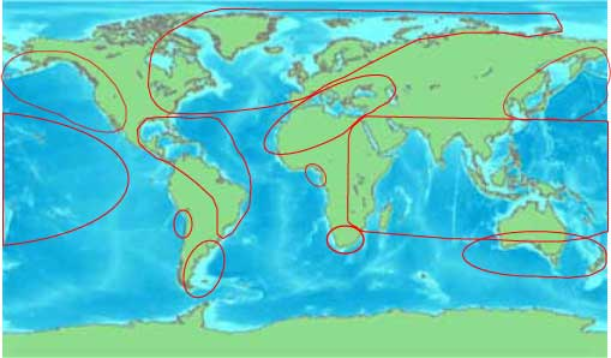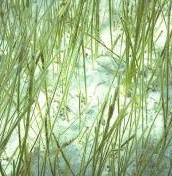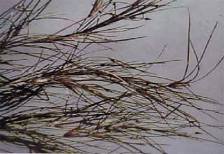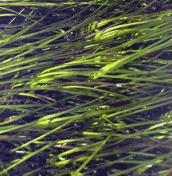

*Seagrass polygon distribution
What are seagrasses?
Seagrasses are flowering plants that live in submersed ocean waters
of estuaries, bays, and rocky shores. They are part of a larger group
of underwater plants called SAV (Submerged Aquatic Vegetation). They
provide food and habitation for various marine animals and make up only
one fraction of the percent of all flowering plants. Seagrass must follow
four basics: (1) It must be adapted to salty water; (2) it needs to
be able to grow fully submersed; (3) it must be strongly anchored so
that it can withstand wave action and tidal currents; (4) and it must
be pollinated. Seagrasses are distinguished from other SAV because they
require a massive amount of salinity to survive. Although assuming that
seagrasses evolved from freshwater, one of their biggest challenges
faced is adapting to saltwater.
Seagrasses play an important role in ecology in that some act as filters.
For example eelgrass beds help protect the rich meadows by using a filtering
action to protect it against water pollution, sewage runoff and various
fungi. Without this role population of cod, shellfish, scallops and
other oyster industry may be ruined. Areas that were formerly covered
by dense growths of eelgrass may be completely devastated and beaches,
which are protected from heavy wave actions, now may be exposed to storms.
Compared to other terrestrial flowering plants, seagrasses are not well
known but play major role in marine ecosystems.
This report will compare data of existing seagrass maps with that of
the late 1980’s and early 1990’s to identify areas of change.
Satellite imagery and remote sensing will be used to help in the analysis
and interpretation of the study area.



*Halodule wrightii (shoal grass),Ruppia maritime (widgeon grass) and
Zostera marina (eelgrass)